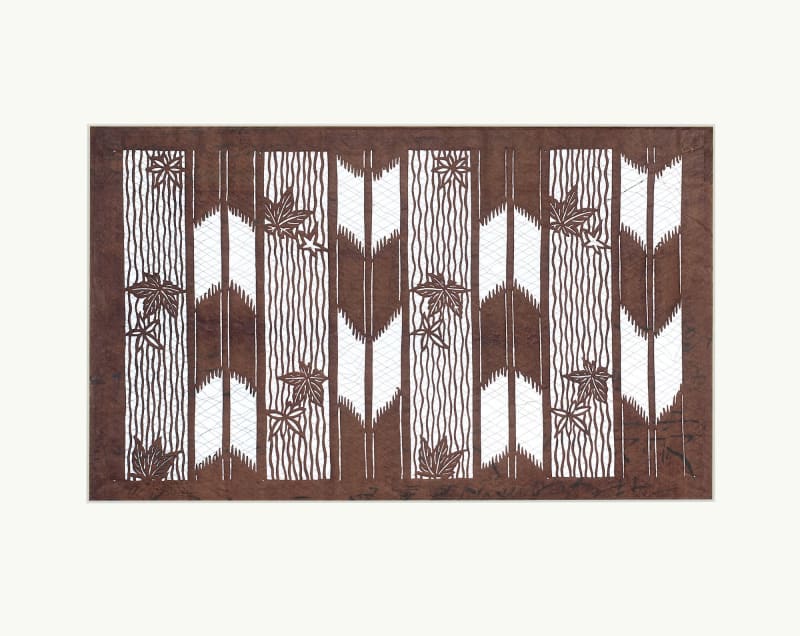In the exhibition we are showing a selection of katagami and uwagami from the late Edo period / Meiji era (2nd half 19. c. / beginning 20th c.).
Katagami are dyeing stencils (kata) made from impregnated, robust paper (kami) which are used for colouring and patterning textiles (katazome) by means of those stencils and the application of a special rice paste, in a method comparable to batik printing. Most katagami originated in the city of Suzuka in the old province of Ise (today: Mie Prefecture), where the tradition of stencil carving (katahori) and specialised papermaking is cultivated to this day. Almost all stencils in modern katagami collections date from the 19th and the beginning of the 20th century.
Before carving a katagami, a design must first be drafted and then transferred to the blank topmost katagami paper sheet. The so-called uwagami used for this purpose appear in public very seldom; they are amazing testimonies to a boundless graphic imagination.
Katazome, the dyeing of textiles by means of katagami, belongs to the traditional dyeing methods practised in Japan since ancient times. Katazome developed into a highly sophisticated and popular textile art during the Edo Period (1615-1867). Stencil dyed kimonos of high elegance with komon ("small patterns " – minimal motifs in endless repetition) were first restricted to the samurai class. The high demands of this buyership placed on stencil carvers and dyers led to perfecting the various techniques and to an expansion of the formal repertory by adapting the whole wealth of East Asian motifs for katagami. This also applies to the design of chûgata (katagami more realistic "medium-sized patterns") which were primarily used for blue-and-white dyeing of summer kimonos (yukata) made of fine cotton fabrics. (Text: Friedrich Müller, 1984; rev. Wolfgang Höhn, 2011 + 2015)
Scientific research by Mariko Sakai and Wolfgang Höhn.

